- How to Install AAC Conductor
- Power cable current carrying capacity
- Guide on Low Voltage Aerial Bundling Cables(ABC Cab
- Guide to Electrical Insulators
- The difference between 3 + 2 and 4 + 1 on wires and
- What are the cable accessories?
- AWG (American Wire Gauge) to MM2 Conversion
- Cable Short Circuit Current Calculate
- Overhead conductor,poles,and gold fittings design
- OPGW Cable Line Design Several Key Issues[2]
E-Mail:info@dosensecable.com
Phone:+8613073786551
Tel:+8613073786551
Add:Zhengzhou, Henan,China
How to choose heat-resistant high temperature wires and cabl
General wires and cables are insulated with plastic and rubber sheathing, these materials are regular standard materials, have a rich source, can meet the requirements of mass production, and the cost is relatively low.But for some special industries such as petrochemical, steel, aerospace, shipbuilding, war industry, pharmaceutical, food, plastics machinery, boilers and other industries related to the heat and high temperature, all need to be able to bear certain high temperature wire and cable, ordinary wire and cable obviously can't use, can heat resistance wire and cable in order to ensure the safe operation of the power and signal.
With the rapid development of the international economy, the demand for high-temperature cables in the special industry has been increasing at a high speed. The heat-resistant and high-temperature cables are growing at a rate of 20% every year. As an important part of the special cables, high-temperature cables have strong vitality and are in short supply.
Let's take a look at what kind of working temperature are called heat and heat resistant cables.
The insulation and sheath of our ordinary wire and cable are made of ordinary engineering rubber and plastic as basic resin, but the requirement is insulation grade.Common rubber materials used for cables are: butyl rubber, ethylene propylene rubber, natural rubber and chlorosulfonated polyethylene, etc., operating temperature is (60 ~ 75)℃;Common cable with plastic material has polyvinyl chloride, polyethylene (including crosslinked polyethylene) and polypropylene, etc., the working temperature is (70 ~ 90)℃.Thus, these cables are not strictly heat-resistant or high-temperature cables.
Heat-resistant cables generally refer to cables (90 ~ 155)℃ and below, and high-temperature cables are 180℃ and above.And to solve the ordinary cable is not resistant to high temperature, it is necessary to improve the material, or use can withstand high temperature insulation materials.
Two, the main characteristics of heat and high temperature wire and cable
Heat - resistant and high - temperature wires and cables are generally determined by two requirements.The first is the wire and cable environment temperature is high, the cable in the long term at high temperature can normally transmit signals or electricity;The other is the power transmission cable, mainly to increase the interception capacity for the main purpose.
Cable for high temperature operation.Ordinary cable in the high temperature is easy to produce insulation aging and coking phenomenon, the use of cable performance, damage and can not be used.High temperature cable can work normally and stably at rated high temperature, signal or power transmission performance is not affected, but also can ensure a long service life of the cable.This type of functional cable is one of the most common and most easily understood high-temperature cables.
For the purpose of reducing the diameter and weight of the cable before the current carrying, it is developed to lightweight.Generally speaking, the higher the working temperature of the cable, the greater the carrying capacity of the cable with the same section.In situations such as airplanes and automobiles, the reduction of weight is significant, and the use of high temperature cables greatly reduces the cross section.When the operating temperature rises from 90℃ to 155℃, the current carrying capacity increases by 50%. Under the same current carrying capacity, the weight of the cable will be reduced by half and the cost will also be reduced.Of course, the electrical energy loss of most insulating materials also increases with high closure.
3. Heat-resistant wire and cable
Heat - resistant wire and cable: heat - resistant material and ordinary material heat - resistant modification of two.
(1) wires and cables made of heat-resistant materials
Heat resistant material of wire and cable is insulation and sheath material body resin with heat resistance, the main varieties are: polyurethane (up to 155℃ class), polyester (up to 135℃), polyvinylidene fluoride (150℃) and nylon (up to 115℃) insulation or sheath material.Often used in communications, automotive, electrical, construction and other industries.
(2) ordinary cable materials are modified in various ways to achieve heat resistance:
YJV power cable
1. Heat resistant modification of rubber materials
Rubber material because of its heat resistance is poor, thus improve the working temperature of the remainder is small, ordinary rubber filled with more heat stabilizer and through crosslinking treatment to reach 90℃, therefore can not be called heat resistant cable, such as styrene-butadiene rubber, neoprene rubber, chlorosulfonated polyethylene.It is mainly used for rubber insulated mobile flexible wire, rubber insulated flexible power cable and control cable.
But epdm rubber can be modified, so that the temperature level can be raised to 135℃, with better insulation properties, so it has a better development prospect in rubber.
2. Modification of PVC cable
Working temperature is 70 ℃ of ordinary PVC cable, PVC cable materials of high miscibility, make its modification is possible, the use of more quantity of heat stabilizer of the PVC heat rising from 70 ℃ to 90 ℃ or 105 ℃, thus greatly expand the applicability of the PVC this old material, perhaps this is PVC cable has become one of the reasons?PVC cable material at 90℃ is often used for crosslinked polyethylene cable sheath, mainly used for power, control and electrical equipment cables. Due to the modification of PVC, the disposable PVC cable material will last for a long time in the use of sheath.The main component of polyvinyl chloride nitrile compound is PVC, so it has the same properties as PVC cable and PVC insulated cable.
3. Modification of polyethylene cable
The plastic properties of polyethylene are better, but the fillability is poor.The working temperature of polyethylene cable can be raised to 90℃ by DCP dry chemical crosslinking and silane warm water crosslinking. The former is used for medium and high voltage power cables, while the latter is used for low voltage cables.However, another crosslinking method, irradiation crosslinking modification, can greatly improve the working temperature of polyolefin (mainly polyethylene). The irradiated insulation material can be under different conditions, and the temperature tolerance can reach 105℃, 125℃, 135℃, 150℃, and 180℃ abroad.It is mainly through the conversion of high-energy electrons into stable bond energy, so that its molecular structure can strengthen its thermal stability, and at the same time, it is equipped with appropriate thermal stabilizer, which can be divided into different heat resistant grades according to the energy level and the performance of the thermal stabilizer.
The common processing equipment of irradiation crosslinking industry is electron accelerator, which is to increase the energy of electron beam high voltage to achieve the purpose of crosslinking polyolefin materials.Irradiation crosslinking can also be used to crosslink rubber, PVC and fluoroplastic materials.Irradiated crosslinked polyolefin wires and cables are mainly used for heat-resistant building lines, automobile lines, aviation wires, locomotive lines and electric motors.
Heat resistant cable is medium temperature cable, has a certain heat resistance, can adapt to a certain temperature environment.And the application is the most, in the power transmission cable, can ensure the insulation performance at the same time, increase the cable current-carrying capacity, reduce the cable weight and section, it is of great significance.
- Previous:The difference between 3 + 2 and 4 + 1 on wires and cables
- Next:No





 info@dosensecable.com
info@dosensecable.com
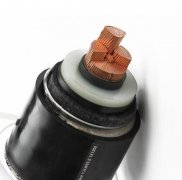

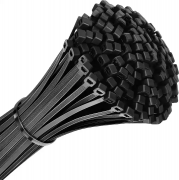
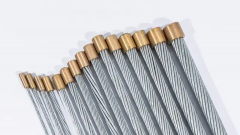
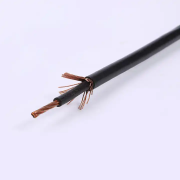
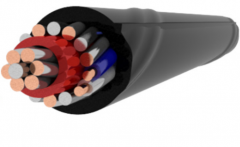


 Tel:
Tel:  Address: Zhengzhou, Henan,China
Address: Zhengzhou, Henan,China